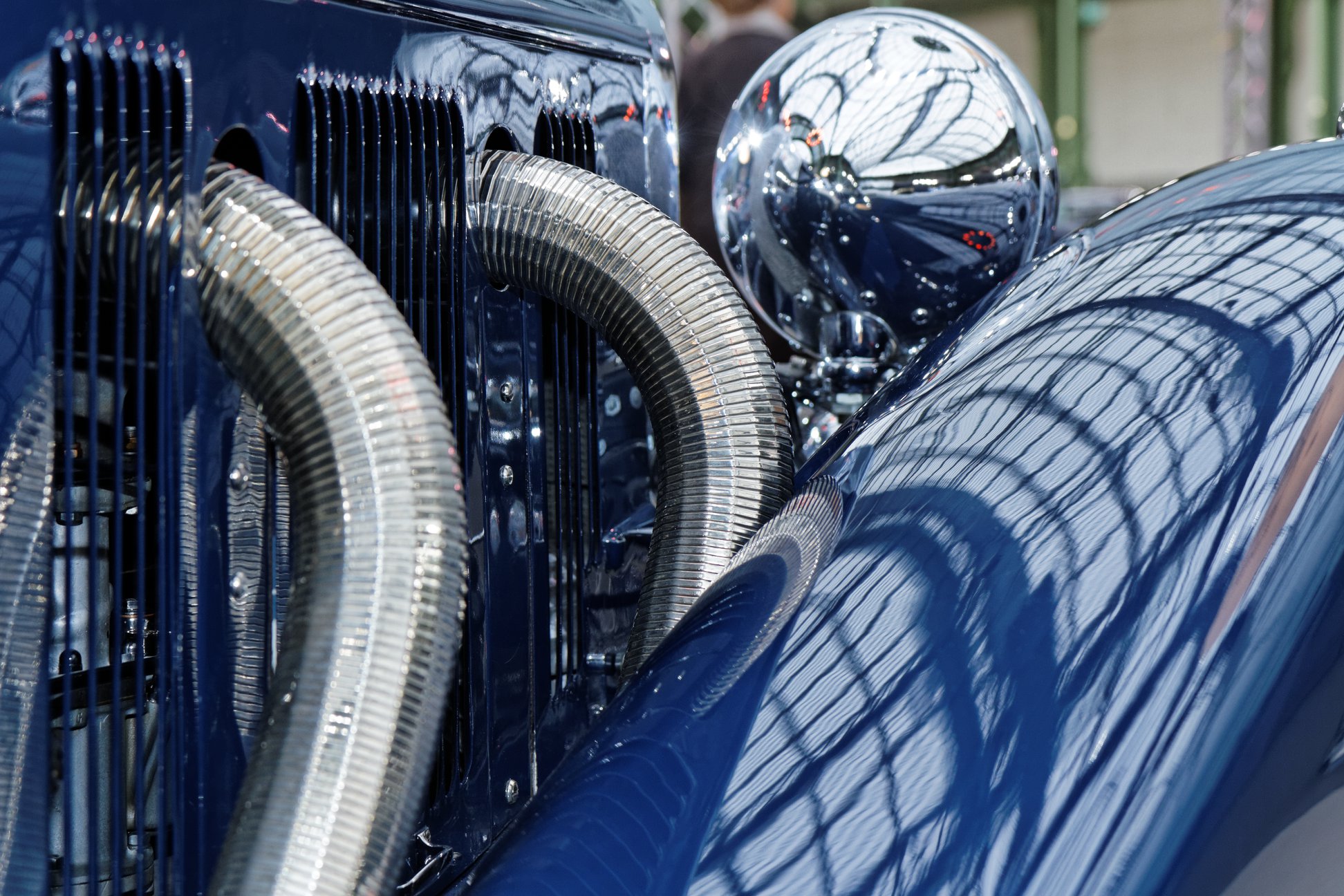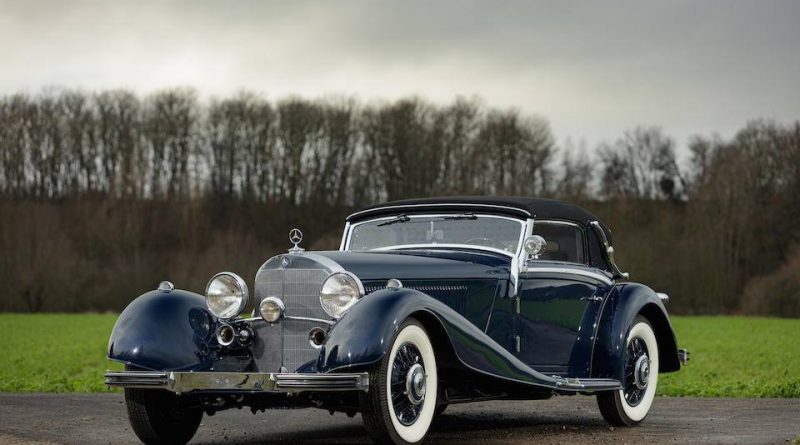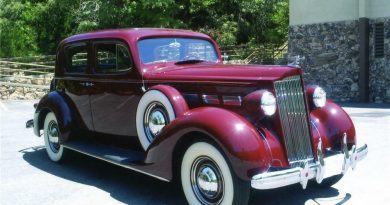Two new – and very different – Mercedes models were displayed at the Berlin Motor Show in March 1934. One was the 130, Mercedes-Benz’s first production car with a rear-mounted four-cylinder engine which developed 26 hp from a displacement of 1.3 liters. The other was the 500 K, an imposing, elegant sports car with supercharged eight-cylinder engine; with the supercharger engaged, it developed 160 hp from a displacement of 5,018 cc.
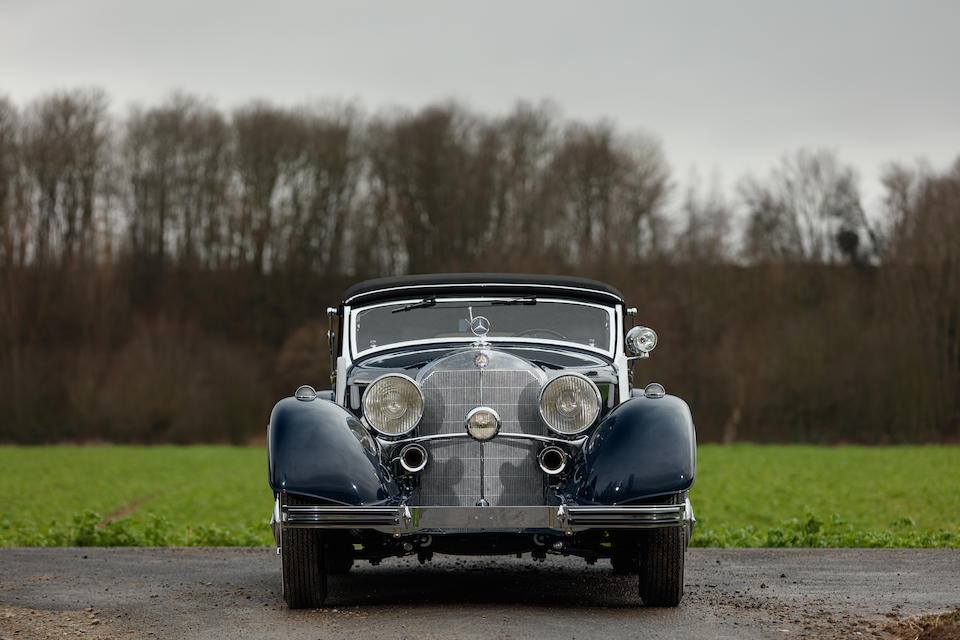
The inline-eight engine was based on the previous 3.8-liter unit used before with an enlarged bore and stroke and a different crankshaft. It was mated to a 5-speed semi-automatic gearbox, meaning that the driver could shift from fourth to fifth gear without using the clutch. The top gear was overdrive and it was designed for the motorway high-speed use. In those times, the Autobahn (German highway) network started to take shape and, as an “Autobahn-Kurierwagen” (Highway transporter) as it was called, its performance lived up to its name.

The 500 K was the successor to the 380 presented only one year earlier, and a descendant of the tremendously powerful, supercharged S, SS, SSK and SSKL sports cars – genuine muscle cars, as we would call them today, and virtually invincible in motor sport.
The first 500 K – ‘K’ for Kompressor = supercharger, to distinguish it from the 500 sedan without supercharger – had been designed as an elegant two- or four-seater sports car with roadster and cabriolet bodies tailored at the Daimler-Benz plant in Sindelfingen. With this model, the company bid farewell to the Roaring Twenties and the Big Four mentioned earlier. The latter had still had extremely firm chassis with rigid axles and leaf springs, i.e. hardly any damping at all, and their bodies were plain and above all functional, not to say uncomfortable.
In this ground-breaking design, wheel location, springing and damping were for the first time separated from each other, creating a new level of precision in straightline stability. In its essence, this front axle, fitted like the rear axle with coil springs, has remained the design model for generations of automobiles throughout the world to this day, and it also featured in the 500 K, of course.
The roadsters, the two-seater cabriolet ‘A’ (with two side windows) and the ultra-modern, streamlined Motorway Courier, the first car with curved side windows and classified by the manufacturer as a sports sedan, were set up on a chassis on which radiator, engine, cockpit and all rearward modules were moved 185 millimeters back from the front axle. This configuration was a concession to the zeitgeist, a small trick that created the visual impression of a particularly long front-end and, therefore, the desired sporting appeal.
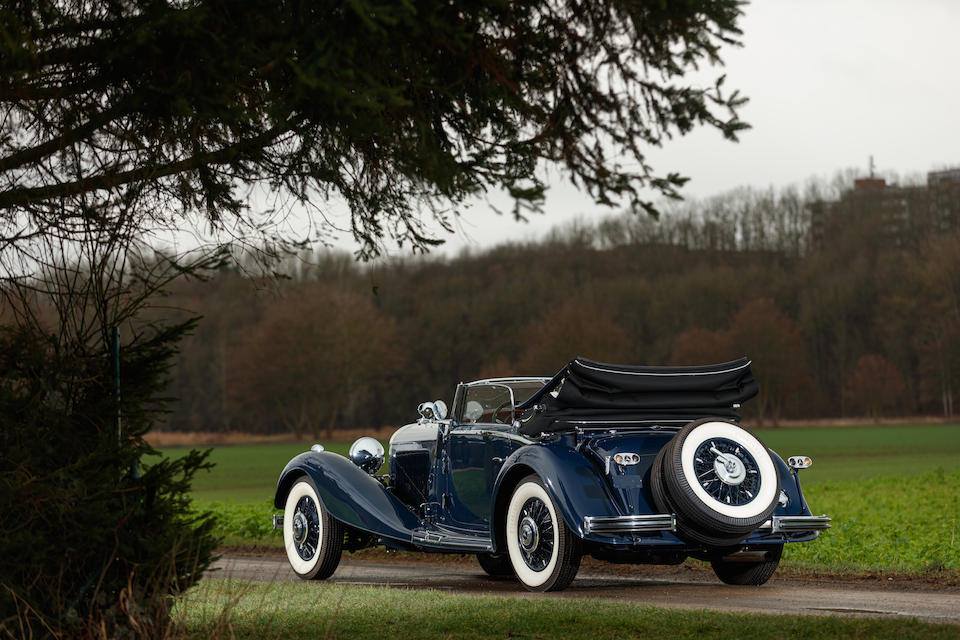
No matter what version of the 500 K you look at, the elegance of its body sends people into raptures even today: every single one had been given its own, unparalleled personality by the ingenious coachbuilders in Sindelfingen. Only few customers opted for bodywork tailored by independent bodybuilders to their own wishes (the price lists quoted the chassis as individual items), especially since the Sindelfingers rose above themselves in accommodating the customers’ special wishes, for instance for individual fender versions, rear-end designs or interior appointments. Within two years, 342 units of the 500 K were produced.
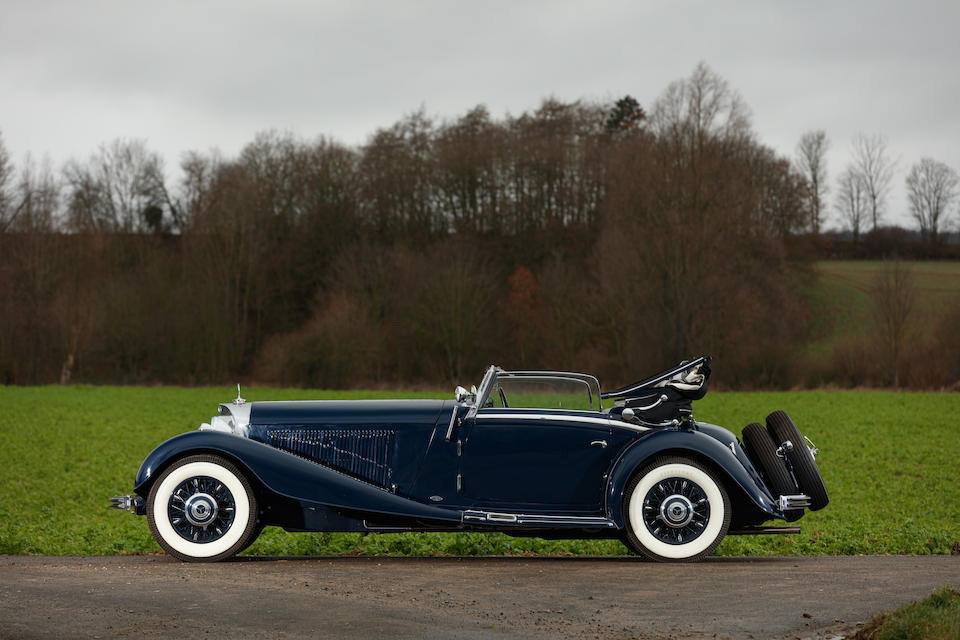

The style is signature Saoutchik. It is an important masterclass example of what Jacques was doing on his most flamboyant styles in 1935 – 1936, where the contrast color on the hood flowed into a free-form sculpture on the side of the car. The concept is congruent with a famous 1935 Saoutchik Hispano-Suiza K6 known as La Rognon, which featured a different but aesthetically similar sculptured beltline and side treatment. As opposed to the Hispano, the side sculpture on the Mercedes is further echoed and enhanced as painted scallops on the fender-sides and the striking side-mount casing. It is an artistic and playful expression of the carrosserie as a canvas where the coachbuilder can exercise his artistic vision.


